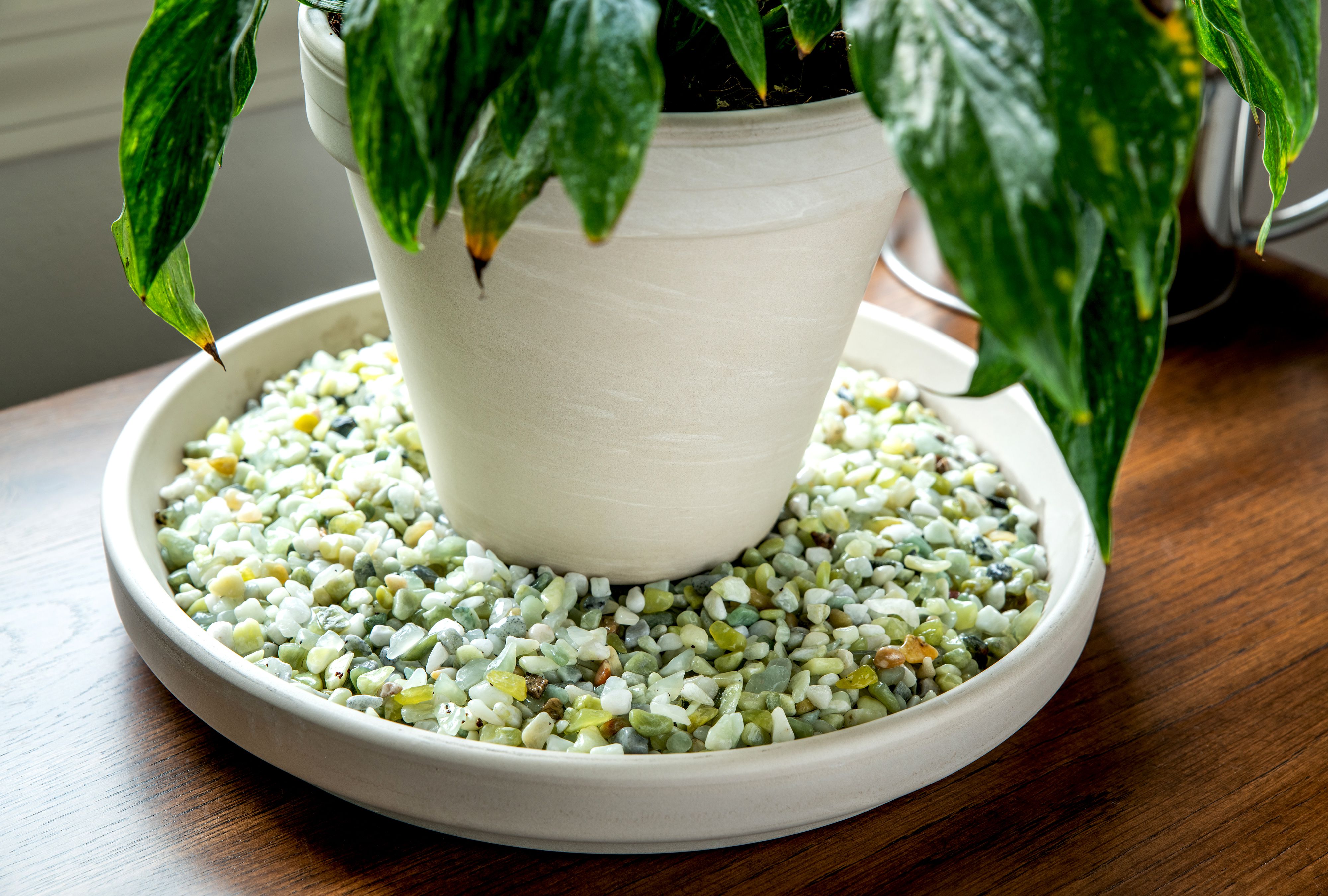
Introduction
Many popular houseplants come from tropical regions and thrive in humid environments. Unfortunately, the air in most homes—especially during winter—can be too dry for these humidity-loving plants. Luckily, there’s a simple, affordable solution: the pebble tray! In this guide, you’ll learn what a pebble tray is, how it works, and how to make one to keep your plants happy and healthy.
Why Humidity Matters for Indoor Plants
Humidity is the amount of moisture in the air. For many indoor plants, especially tropical varieties, higher humidity helps:
- Prevent brown leaf tips and crispy edges
- Support healthy growth and lush foliage
- Reduce stress and susceptibility to pests
If your plants look droopy, have dry leaf tips, or seem to struggle in winter, low humidity could be the culprit.
What Is a Pebble Tray and How It Works
A pebble tray is a shallow tray filled with pebbles and water, placed beneath your plant’s pot. As the water evaporates, it increases the humidity around the plant. The pebbles keep the pot above the water line, preventing root rot while still boosting local moisture.
How it works:
- Water in the tray slowly evaporates.
- The air directly around your plant becomes more humid.
- Your plant enjoys a microclimate that mimics its natural habitat!
Pebble trays are especially useful for grouped plants, as the effect is amplified when several are placed together.
How to Make Your Own Pebble Tray
Making a pebble tray is easy and budget-friendly. Here’s how:
- Choose a shallow tray that’s wider than your plant’s pot.
- Add a layer of pebbles or gravel (about 1–2 inches deep).
- Pour water into the tray until it just reaches the top of the pebbles (don’t submerge them).
- Set your plant pot on top of the pebbles. Make sure the pot sits above the water and doesn’t touch it directly.
- Refill water as needed to keep the tray from drying out.
Tip: Clean the tray and pebbles every few weeks to prevent algae or mold.
Which Plants Benefit the Most
Pebble trays are great for any plant that loves humidity, including:
- Ferns (Boston, maidenhair, bird’s nest)
- Calatheas and Marantas (prayer plants)
- Orchids
- Peace lilies
- Fittonia (nerve plant)
- Alocasia and colocasia
- Anthurium
- Philodendron
Humidity isn’t the only thing snake plants care about — we also wrote a guide on the best soil for snake plants.
Product Recommendations
1. Homenote Clear Plant Saucers
Durable, clear plastic trays perfect for pebble trays of any size. They’re sturdy, easy to clean, and come in a variety of diameters.
🛒 Buy on Amazon2. Royal Imports Decorative River Pebbles
Smooth, natural stones ideal for creating an attractive and functional pebble tray. They’re pre-washed and ready to use right out of the bag.
👉 See on AmazonFAQs
Q: How often should I refill the water in my pebble tray?
A: Check every few days—refill whenever the water level drops below the top of the pebbles.
Q: Can I use any type of pebbles or rocks?
A: Yes! Just make sure they’re clean and large enough to keep the pot above the water line.
Q: Will a pebble tray increase humidity for my whole room?
A: Not significantly. Pebble trays create a localized humid microclimate around your plant, not the entire room.
Using a pebble tray is a simple, effective way to boost humidity for your favorite indoor plants. With just a few supplies, you can help your tropical beauties thrive all year long!